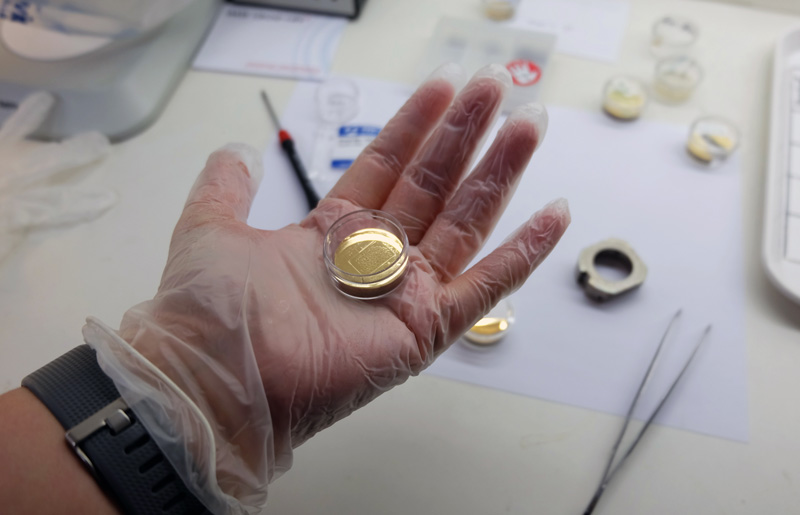Volcanoes along the 5,600-kilometer-long Sunda Arc subduction zone in Indonesia are among the most active and explosive in the world—and given the population density on the islands of the archipelago, some of the most hazardous.
“The most dangerous volcanoes are in subduction zones,” said Frances Deegan, a researcher in the Department of Earth Sciences at Uppsala University in Sweden.
In a new study published in Nature Communications, Deegan and her colleagues shed more light on the magma systems beneath four volcanoes in the Sunda Arc: Merapi in Central Java, Kelut in East Java, and Batur and Agung on Bali. Using relatively new technology to measure oxygen isotopes in crystals in lava samples from the four volcanoes, the researchers established a baseline measurement of the oxygen isotopic signal of the mantle beneath Bali and Java. That baseline can be used to measure how much the overlying crust, or subjected sediments, influences magmas as they rise toward the surface.

Volcano Forensics

In the past, volcano forensic studies have relied on such technologies as conventional fluorination or laser fluorination to measure isotopes and minerals in samples, which are used to analyze pulverized lava samples but also often capture unwanted contaminates. In the new study, the research made use of the Secondary Ion Mass Spectrometer (SIMS) at the Swedish Museum of Natural History. “It allows you to do in situ isotope analysis of really small things like meteorites,” Deegan said, “things that are really precious where you can’t really mash them up and dissolve them.”
SIMS also allows for targeting of portions of individual crystals as small as 10 microns, which allowed the researchers to avoid the unwanted contamination sometimes found within an individual crystal, according to Terry Plank, a volcanologist at Columbia University who was not involved in the study. “The ion probe lets you avoid that and really analyze the pristine part of the crystal,” she said, “so we can see, in this case, its original oxygen isotope composition.”
New Measurements
Researchers can use SIMS to measure oxygen isotope ratios (18O to 16O)—expressed as a δ18O value, which normalizes the ratios to a standard—in various samples. On the basis of previous measurements for mid-ocean ridge basalts, Earth’s mantle is believed to have a δ18O value of around 5.5%, according to Deegan. “The crust is very variable and very heavy, so it can be maybe 15% to 20% to 25%,” she said. “If you mix in even just a little bit of crust with this very heavy oxygen isotope signal, it’s going to change the 5.5%—it’s going to go up.”
Deegan and colleagues used SIMS to determine δ18O values from the mineral clinopyroxene in samples from the four volcanoes. In lavas from the Sunda Arc, clinopyroxene is a common mineral phase and can potentially shed light on source compositions and magmatic evolution. The results showed that the average δ18O values for each volcano decreased as the researchers moved east, with Merapi in Central Java measuring 5.8%, Kelut in East Java measuring 5.6%, and the Bali volcanoes Batur and Agung measuring 5.3% and 5.2%, respectively.
“What really surprised me the most was finding this really pristine mantle signature under Bali,” Deegan said. Researchers already knew that the crust grows thinner as you move east from Java to Bali, but Deegan expected to find more evidence of ocean sediment in the measurements under Bali—seafloor material that melts along with the Indo-Australian plate as it slides beneath the Eurasian plate at the Sunda Arc. “We didn’t see that. We actually have a really clean mantle signature, which is unusual to find in a subduction zone,” she said.
The researchers also measured magma crystallization depths of each of the four volcanoes and found that most of the sampled clinopyroxene from the two Java volcanoes formed in the middle to upper crust, while the crystallization occurred closer to the crust–mantle boundary beneath the Bali volcanoes. “I think that we have found a special view on the Indonesian mantle at Bali,” Deegan said. “Agung volcano on Bali seems to be the best mirror of mantle compositions in the whole region.”
These findings could help scientists better understand what happens when magma leaves its sources and moves toward the surface. It’s theorized that magma interaction with volatile components in the crust could be a driver of more explosive eruptions, Deegan said, and so having a clean, contained mantle baseline for the Sunda Arc region could aid future research.
Crust or Sediment?
Although Plank was excited by the measurements of uncontaminated, unaltered oxygen isotope baselines in the paper, she wondered whether the differences in δ18O values are really explained by thicker crust under Java. “The averages for each volcano almost overlap within 1 standard deviation, so there are more high ones at Merapi than at Agung, but they all have the same baseline,” she said. “[The authors] argue that’s crustal contamination, but I wonder if there are other processes that can cause that.” It’s not always so easy, geochemically speaking, to distinguish between crustal contamination and material from subducted seafloor, Plank added. “The crust erodes and goes into the ocean, and then that material on the seafloor gets subducted and comes back up again,” she said. “It’s the same stuff.”
As more research is conducted with SIMS, Plank would like to see work similar to Deegan’s done on samples from Alaskan volcanoes, which exhibit low δ18O values—like the Bali volcanoes—as well as on more shallow magma systems, like the Java volcanoes.
“Any improvement in our knowledge of these volcanoes [in subduction zones] will help us be better prepared when they erupt,” Deegan said.
—Jon Kelvey (@jonkelvey), Science Writer






